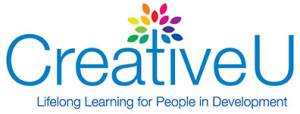Experts raise questions for “MOOCs” & online education at CIES
By Jillian SlutzkerMarch 9, 2016
Vancouver—With more technology than ever before in the hands of millions in the developing world, massive open online courses have been offered up as part of the solution to overcoming the major education barrier of access, particularly in developing countries.
But technologists and educators have much more to explore to ensure that these platforms and classes actually reach these audiences, explained experts on a panel titled “MOOCs and online education: What model for developing countries?” at the Comparative and International Education Society conference on March 8.
Research has shown that MOOC users in both high and low income countries are majority male, highly educated and employed. Limited Internet connectivity and a lack of technology know-how are among many reasons low-income populations may lack access to MOOCs.
To reach more learners with content relevant to their lives and country contexts it might be time to think beyond the “MOOC,” said Jacqui Deelstra, a Technology for Development Associate at Creative Associates International’s Development Lab.
“How do we move beyond what is defined as a traditional MOOC and really provide a good learning experience?” she posed. “What does it mean now to utilize online and mobile tools for training and capacity building?”
CreativeU: Designing for the learner
 While MOOCs have expanded access to high quality content to some learners, the main providers of MOOCs and online education are located in developed, English-speaking countries. Course content from these institutions may not be suited for local contexts and may preclude non-English speaking learners from participating.
While MOOCs have expanded access to high quality content to some learners, the main providers of MOOCs and online education are located in developed, English-speaking countries. Course content from these institutions may not be suited for local contexts and may preclude non-English speaking learners from participating.
“Anyone in the world can go online and learn how to do computer programming from a professor at MIT. That’s amazing!” said Deelstra.
But for a fruit vendor in rural Tanzania looking to set up shop in the local market, she explained, a Stanford University business course might not provide the best instruction.
Through the responsive e-learning platform CreativeU, Deelstra and her colleagues are addressing this need for locally relevant, easy to comprehend e-learning content. For example, CreativeU offers business trainings tailored to local artisans and small and medium-sized business owners in Western China and vocational skills courses designed for at-risk youth in Nicaragua.
“What we really focus on at CreativeU is creating customized iterations for people and organizations who want to focus on capacity building…Those who own small and medium enterprises in [Western China] and youth in Central America have different needs and need different content.”
CreativeU learning modules are offered in local languages and packaged in easy to digest 7-10 minute modules that build on one another. The idea is that learning meets the user where they are, in a format that is easily accessible and with content that is relevant to their lives, said Deelstra.
“We really look at who our user is when designing” courses, she said.
Unlike traditional MOOCs, CreativeU’s courses are often delivered in conjunction with in-person instruction, amounting to a multifaceted blended learning experience that may support learning better than technology-based methods alone.
The outcomes to date are promising, said Deelstra.
“We’re seeing how this can really be affective in a lot of different contexts in developing countries.”
Daniel Wagner, Professor of Education at the University of Pennsylvania and expert in MOOCs and online education, agreed.
“I’ve been following Creative for some time now and they are clearly one of the leaders in this area,” he said.
Wagner added that MOOCs and online education have the potential to play a significant role across sectors like health and workforce development with courses that dispatch critical health information or equip user with sought-after job skills.
Efforts to expand equitable access to these learning tools, he added, is linked directly to conversations around the United Nation’s Sustainable Development Goals.
“There are a lot of panels [at CIES] on the SDGs. It struck me that we’re also talking about the SDGs here in a very significant way…This all connects and it connects in an interesting way through the conversation around MOOCS,” he said.
Pending: Standard definitions, comparisons & more
In a quickly changing technology landscape and with ongoing hurdles to equitable access, questions and challenges around MOOCs and online education abound, said panelists.
For example, panelists discussed whether there is a need for a standard definition of a MOOC to allow for comparison and research on best practices, or whether an e-learning approach can be “MOOCish,” as Wagner termed it.
Educators and technologists will also need to determine what combination of online and in-person education is most effective.
“We all know what kind of things are important but it is getting the mix right,” said Wagner.
The field is also grappling with the issues around brand name education. Is a course more valuable if it certified by a big name university or is it more relevant and beneficial to users to receive content and courses from local institutions and instructors?
As education and technology experts seek to answer these questions, said Wagner, it will be critically important to keep up with a constantly evolving field.
“We need to be paying attention to who is using technology today and for what purposes…What will we be talking about in the next year or five years around MOOCS?” he posed. “We’re not even at the end of the beginning.”

